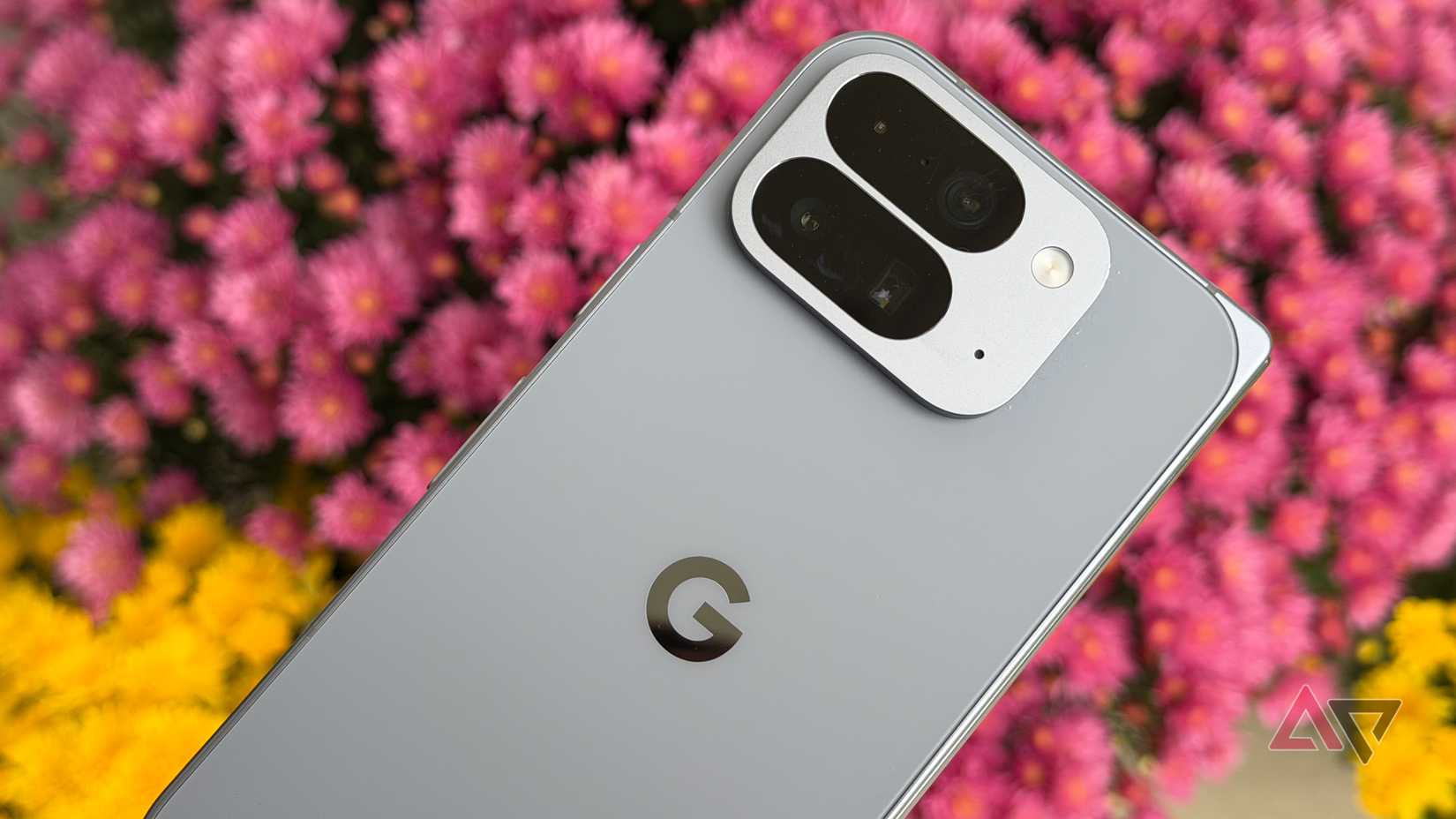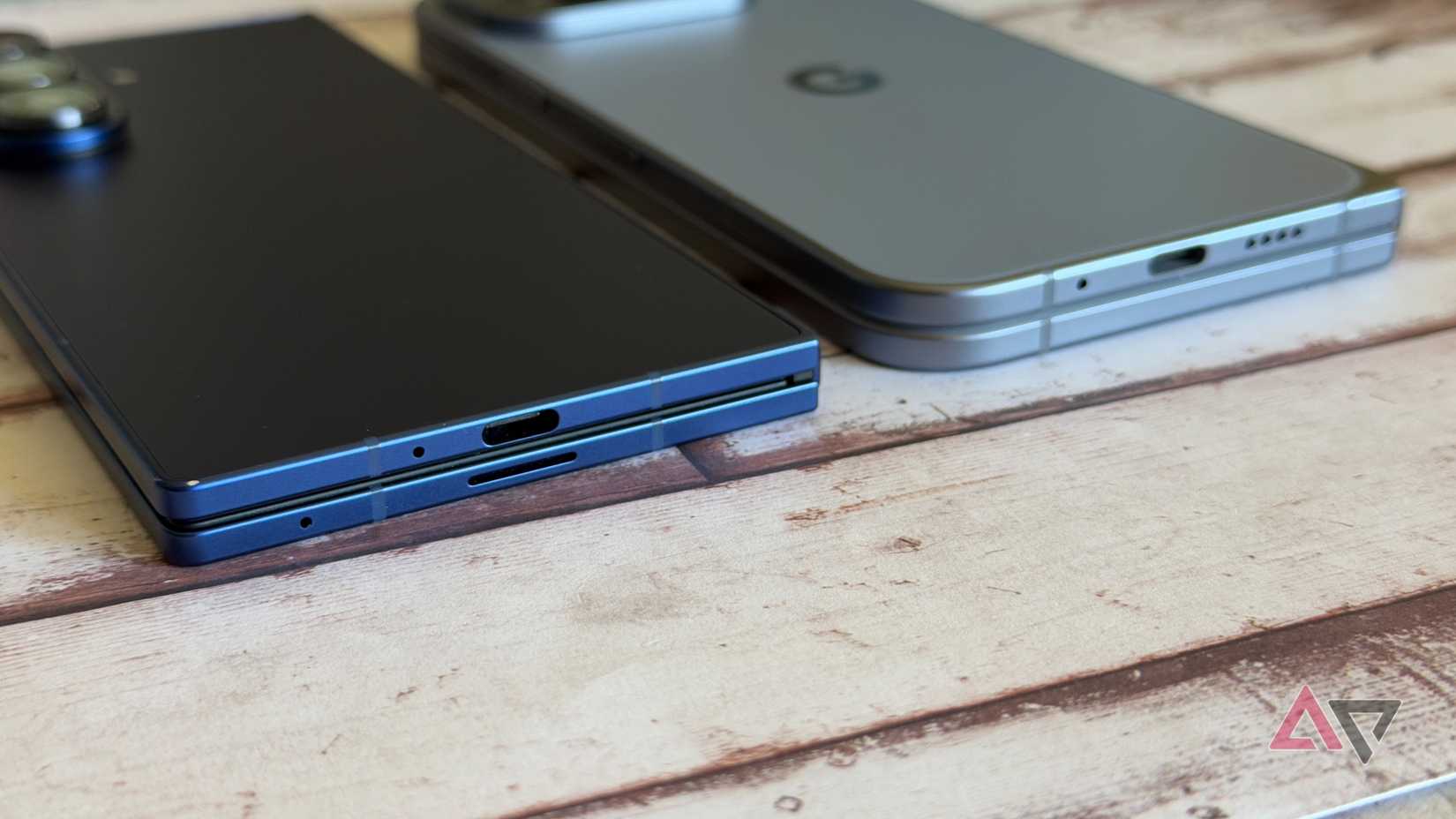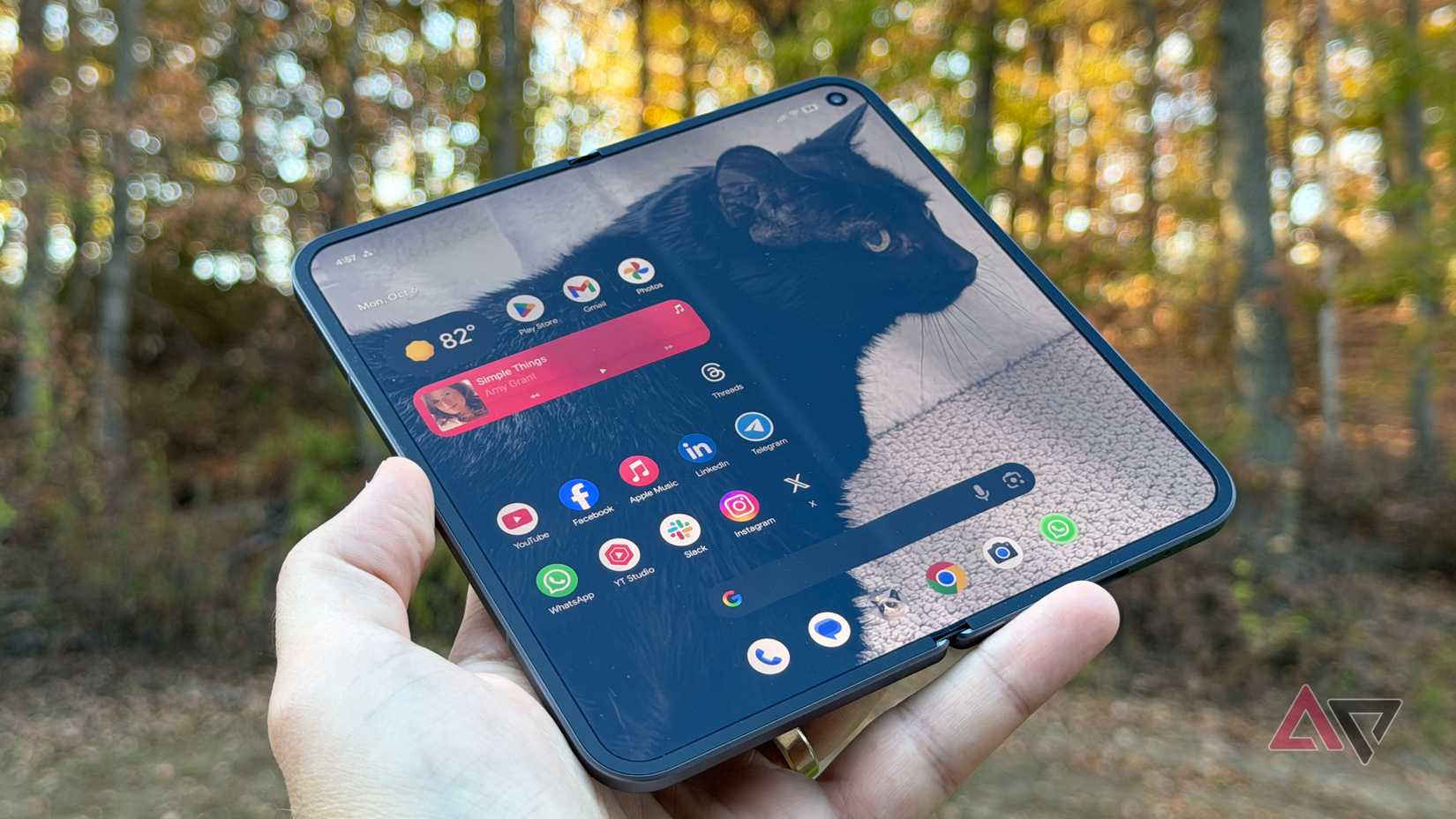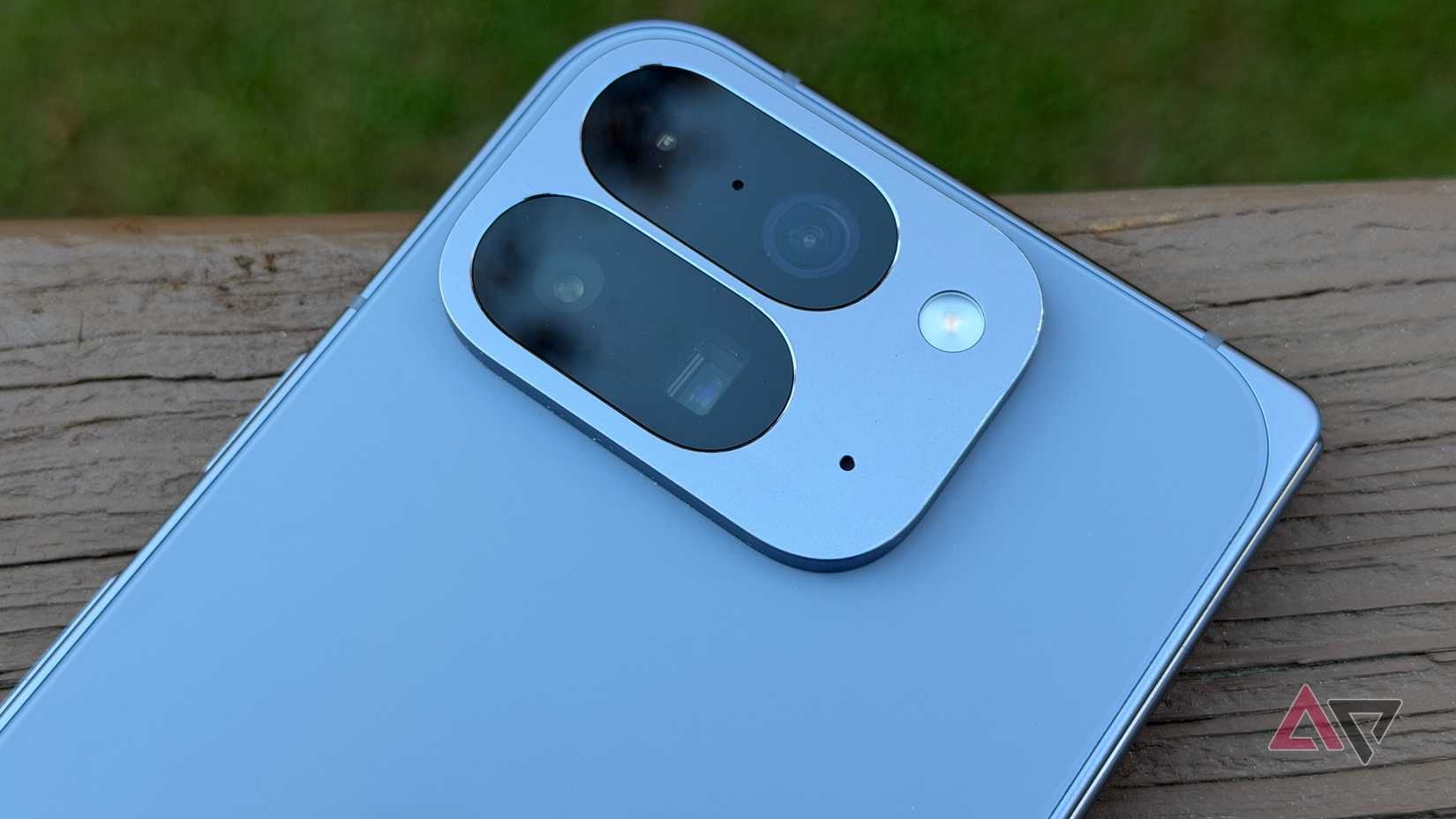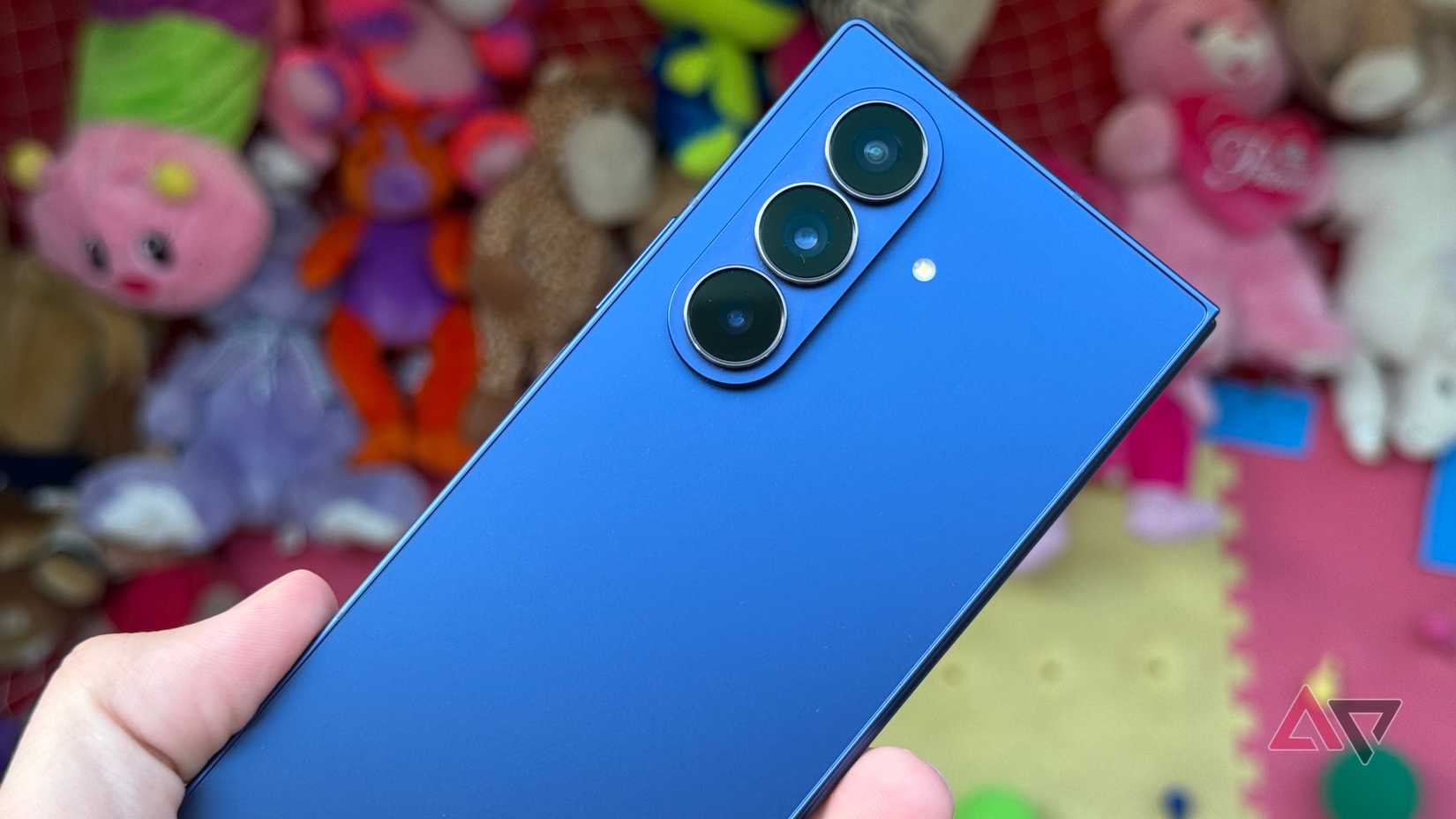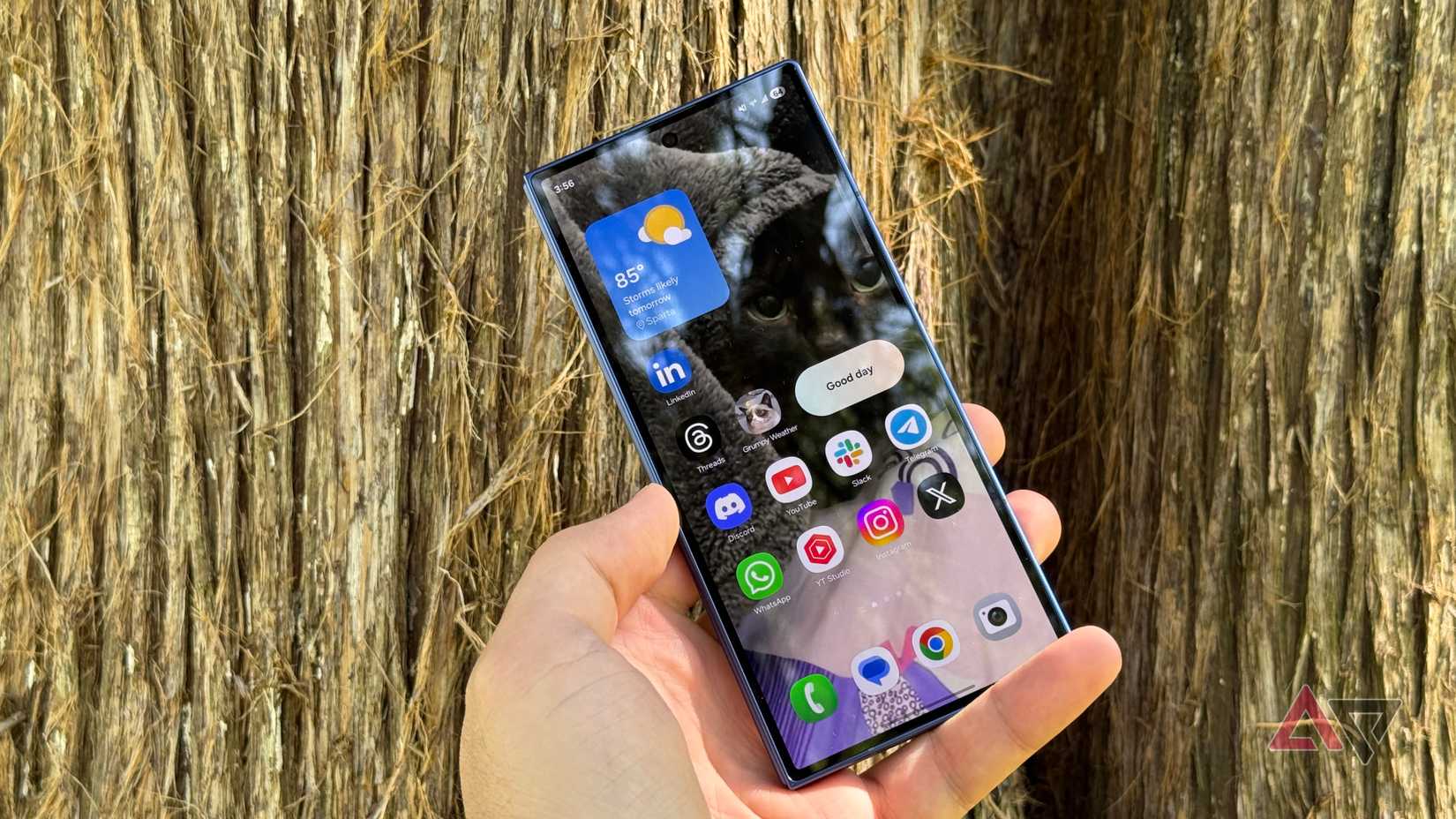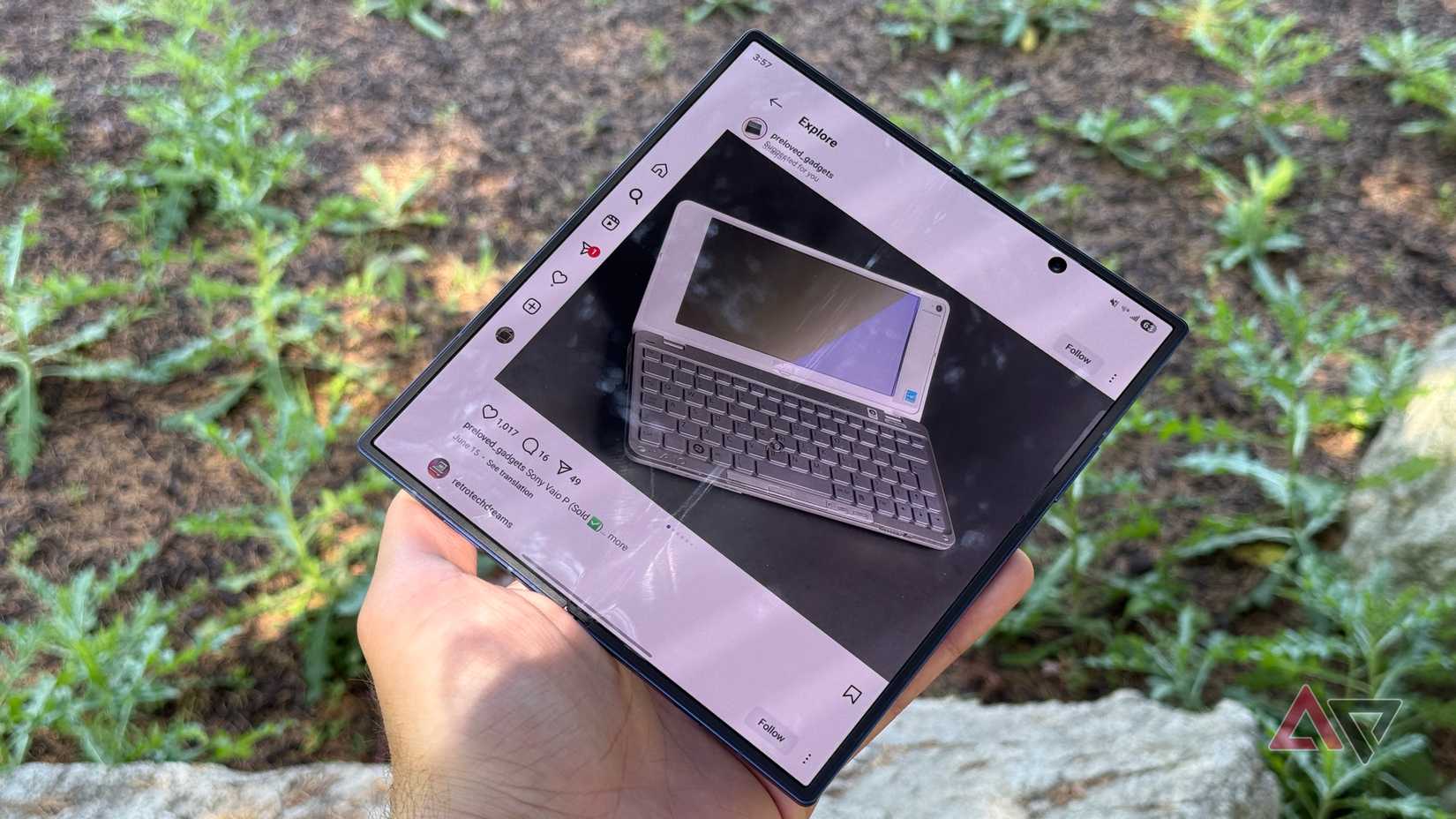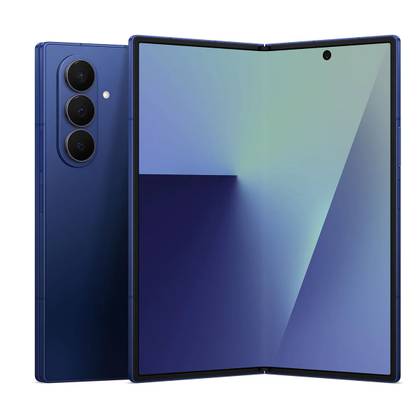I love it when I’m confounded by smartphones because it means we’re discussing interesting products.
In many ways, the Google Pixel 10 Pro Fold and Samsung Galaxy Z Fold 7 feel like they are switching places. The better foldable for first-time users isn’t the one you think, but that’s not the entire story.
Google and Samsung did an admirable job making book-style foldables more practical for casual users, but the high price tags will always relegate these phones to niche status.
Choosing between the two is complicated, but there are clear buyers for both. I used the Google Pixel 10 Pro Fold and the Samsung Galaxy Z Fold 7. Here’s why I’ve never been more confused.
What I love about the Pixel 10 Pro Fold
Google did a lot of work under the hood
If you picked up a Pixel 10 Pro Fold without using it, you’d question whether Google changed anything from last year’s device. Both phones share a similar exterior, with the Pixel 10 Pro Fold actually getting thicker this year.
It’s still pleasant to hold, and it’s ridiculous not to recommend a phone because it’s 5.2mm thick instead of 4.2mm unfolded — especially when there’s a legitimate reason why the Pixel 10 Pro Fold grew.
Thankfully, it’s not a 1:1 build of the Pixel 9 Pro Fold, and the cover screen has become larger and brighter.
I always appreciate any extra room on an external display, and I could comfortably type on the Pixel 10 Pro Fold’s 6.4-inch panel. Its 3,000 nits max brightness does make a difference outdoors, making the screen easier to see in sunlight.
Other improvements Google made are even less noticeable to the naked eye.
The hinge is gearless, and it feels fantastic. It’s solid, and I appreciate Google’s efforts to make foldables more durable — fewer moving parts means there is less that can go wrong in the future.
Similarly, the Pixel 10 Pro Fold features an IP68 rating for dust and water resistance.
It’s not something that will move the needle for enthusiasts or people accustomed to owning foldables, but it’s a significant deal for everyone else.
Whenever I test a new foldable, one of the first questions I’m asked is about its durability.
I don’t want to be careful with where I take my $1,800 smartphone. It’s always going to be a form factor that requires more caution, especially when the phone is unfolded.
However, an IP68 rating is a significant step in the right direction, and it’ll ultimately lead to buyers being more willing to take a chance on the Pixel 10 Pro Fold.
I’ve written extensively about how much I enjoy Material 3 Expressive, and the Android 16 experience on the Pixel 10 Pro Fold is everything I expected.
Google’s 90:10 multitasking split is a delight, and I love being able to slide back and forth between two apps with a tap.
App pairs are also easy to set up, and it appears that Google has finally made the inner display experience a priority.
All your favorite Gemini features are available, including natural language photo editing and Magic Cue.
I still wouldn’t trust AI with anything more than casual facts and simple tasks, but I do find myself using Gemini more often.
I mentioned that the Pixel 10 Pro Fold is thicker in 2025, but Google made use of the space. It now features a 5,015mAh battery, and you can notice the difference.
I get two full days of mixed use, something I haven’t been able to say about any other book-style foldable.
If you charge your phone each night, it won’t matter much to you, but I appreciate the flexibility of knowing the extra capacity is there if I need it.
It’s also a joy to have Qi2 compatibility on the Pixel 10 Pro Fold.
I don’t condone Google not making notable improvements to the cameras on the Pixel 10 Pro Fold, but it’s hard to argue with the quality of its images.
I wish Google would increase the saturation in its photos just a bit more, but I prefer images taken on the Pixel 10 Pro Fold to any other folding phone (in the US).
The 5x telephoto lens is excellent, and it’s one of the fewest compromises you’ll make on a camera system on a folding device.
What I love about the Samsung Galaxy Z Fold 7
Impressively thin, outstanding performance
I noted earlier that a slightly thicker frame wouldn’t be a reason for me to tell people not to buy the Pixel 10 Pro Fold.
However, the 4.2mm thin frame on the Galaxy Z Fold 7 is undoubtedly a reason you’d want to buy one.
It feels outstanding to hold, and don’t underestimate the weight difference. The Pixel 10 Pro Fold is over 40 grams heavier — and you can feel it.
When folded, the Galaxy Z Fold 7 isn’t any bulkier than a traditional smartphone, which is impressive, given that Samsung has widened the cover screen this year. It makes the device a more attractive transition for first-time foldable users.
Its 6.5-inch outer display is wider, meaning I can comfortably spend an entire day without unfolding the phone and be satisfied with the user experience.
There isn’t a penalty for carrying around the Galaxy Z Fold 7. If you don’t need to unfold the phone all day, it doesn’t matter, because it’s so thin and light.
The Galaxy Z Fold 7 also has an advantage under the hood. Its Snapdragon 8 Elite chipset is excellent and easily bests the Tensor G5 in the Pixel 10 Pro Fold.
The Pixel 10 Pro Fold isn’t a bad performer, and raw performance wasn’t Google’s goal. I’m not here to bash the Tensor, and the Pixel 10 Pro Fold is a productivity powerhouse.
However, if gaming is a consideration for you, or you frequently edit photos and videos, you will notice a difference in performance between the two phones.
I may prefer Material 3 Expressive on the Pixel, but One UI 8 is excellent software.
It’s smooth and well-designed, and multitasking runs well on the Galaxy Z Fold 7 — even if app pairs require an extra step compared to the Pixel 10 Pro Fold.
Samsung’s 90:10 split multitasking also runs well on the Galaxy Z Fold 7.
You also get the same seven years of software support. You may not keep your phone for seven years, but it adds value to the device, especially at resale time.
And I could never forget DeX, which is a must-have for Samsung fans.
Samsung didn’t increase the battery size of the Galaxy Z Fold 7. The company thinned out the phone, so I can’t get too upset.
However, we’ve seen plenty of phones overseas use silicon-carbon batteries to add capacity to similarly thin foldables.
I won’t eat Samsung’s lunch for it, and the Galaxy Z Fold 7 gets solid battery life. Still, if you’re using the phone unfolded for a large portion of the day, expect to need to charge it overnight.
For most people, that’s a given, and you’ll likely never have a complaint about the battery life on the Galaxy Z Fold 7.
Still, I wish Samsung had found a way to fit a larger cell than the 4,400mAh one we received.
Samsung was quick to highlight the upgraded camera system in the Galaxy Z Fold 7, and I did notice an improvement in quality from its 200MP primary sensor.
I prefer Samsung’s color science, and images from my Galaxy Z Fold 7 are slightly warmer — ideal for social media.
Overall, I prefer the Pixel 10 Pro Fold’s camera system, especially for low-light photography, but you’re not getting a potato with the Z Fold 7.
It’s not an easy call between the two
If you need better raw performance or want a thin phone as your first foldable, the Galaxy Z Fold 7 is the device you want — even at a $200 premium.
Meanwhile, the Google Pixel 10 Pro Fold is preferred for hardcore multitaskers. If you want to use the inner display plenty without worrying about battery life, Google’s foldable is the way to go.
Either way, I’m frustrated. I wish these phones could be combined for the perfect foldable, but at least it’s a more entertaining conversation this year.
-
Google Pixel 10 Pro Fold
- SoC
-
Google Tensor G5
- RAM
-
16GB
- Storage
-
256 GB / 512 GB/ 1TB with Zoned UFS
- Battery
-
5015mAh
- Operating System
-
Android 16
- Front camera
-
10 MP Dual PD
The Pixel 10 Pro Fold offers Gemini AI features and can withstand an impressive 10 years of screen folding. This smartphone is an investment that’ll last for years to come.
-
Source: Samsung Samsung Galaxy Z Fold 7
- SoC
-
Snapdragon 8 Elite
- RAM
-
12GB or 16GB
- Storage
-
256GB, 512GB, or 1TB
- Battery
-
4,400mAh
- Ports
-
USB-C
- Operating System
-
One UI 8
The Samsung Galaxy Z Fold 7 is the thinnest and lightest in the series to date, integrating a powerful Snapdragon 8 Elite for Galaxy processor for enhanced AI capabilities and a 200MP pro-grade camera. Built for enhanced durability with an Armor FlexHinge and Gorilla Glass Ceramic 2, the device features a wider 6.5-inch cover screen and unfolds into an expansive 8.0-inch main display for immersive viewing and productivity.


